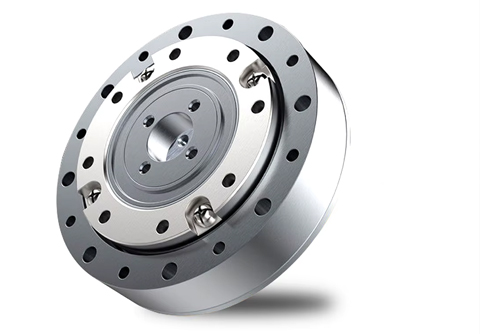Harmonic gears are a unique mechanical gear system that allows high reduction ratios in a compact and lightweight package. If you have any questions or concerns, please feel free to reach out to one of the leading harmonic drive distributors PICEA Motion for more information.

Compared to conventional gear systems such as helical or planetary gears, harmonic gear drive reducer can achieve up to 30 times higher reduction ratios in the same space. In addition to this, it has zero backlash characteristics, high torque, accuracy and reliability. Therefore, this gear system can be used in many applications, including harmonic drives in robotics, aerospace, medical machines, milling machines, manufacturing equipment, and more.
A harmonic gear drive has three key components, a waveform generator, a flexible spline and a circular spline.
The waveform generator is oval in shape and consists of an oval hub and a special thin-walled bearing that follows the oval shape of the hub. This is the input to the gear set, which is connected to the motor shaft. When the waveform generator rotates, it produces wave motion.
The flex spline has a cylindrical cup-like structure and is made of a flexible but torsion-resistant alloy steel material. The sides of the cup are thin, but the bottom is thick and hard. The open end of the cup is flexible, but the closed end is fairly rigid, so we can use it as the output end and attach the output flange to it. The flexible splines have external teeth on the open end of the cup. A circular spline, on the other hand, is a rigid ring with teeth inside.
The arc spline has two more teeth than the flex spline, which is actually the key design of the harmonic drive system. So when we plug the waveform generator into the flex spline, the flex spline will take the shape of the waveform generator. As the wave generator rotates, it radially deforms the open end of the flexible spline. The waveform generator and flexible splines are then placed within the circular splines, meshing the teeth together.
Due to the elliptical shape of the elastic spline, the teeth only engage in two regions on opposite sides of the elastic spline, and these two regions span the major axis of the wave generator ellipse.
Now, as the waveform generator rotates, the flexible spline teeth that mesh with the circular spline will slowly change position. Due to the difference in the number of teeth between the flexspline and the circular spline, for every 180 degrees of rotation of the waveform generator, tooth engagement will cause the flexspline to rotate a small amount back relative to the waveform generator. In other words, the flexible spline teeth that mesh with the circular spline will advance only one tooth for every 180 degrees of rotation of the waveform generator. Therefore, when the waveform generator is rotated 360 degrees, the flex spline will change position or advance two teeth.